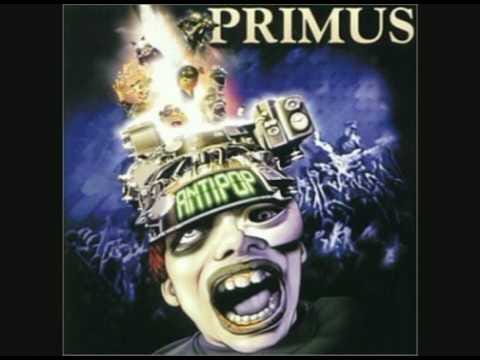Every Tom Waits Song is an email newsletter covering just that, in alphabetical order. Find more info here and sign up to get it sent straight to your inbox:
“Coattails of a Dead Man” comes off the 1999 Primus album Antipop. If, like me, you’re not super familiar with the Primus ouvre, here’s main man (and frequent Waits bassist) Les Claypool looking back on the album’s creation for Consequence:
I remember hearing through the grapevine that [label head] Tom Whalley had said to our managers that I needed a “wake-up call.” I was like, “Woah, what the hell is that?” There was a lot of talk for us to start working with a producer, which we never would have done before. We started doing these EPs and working with a producer. We did some things for South Park, with Rick Rubin, and with Toby Wright. So when it came time to do the Antipop record, we weren’t necessarily getting along very well. People were questioning whether we had lost the plot. The Antipop record was very difficult. It was a great record in some respects. We wanted to work with Brian Eno, but we couldn’t get his attention! We tried to, and I don’t even think we got a call back. So I said, “Let’s work with all these different artists as producers, like Stewart Copeland, Tom Morello, Tom Waits, and Matt Stone.”
In that last sentence Claypool lists all the album’s guest producers except one: Limp Bizkit frontman Fred Durst. No surprise why in 2017 Claypool was downplaying the oft-mocked meathead’s contribution, but at the time Durst was not a random left-field choice. In 1999, in fact, he might have been the most obvious fit of the bunch. The intro of SPIN’s review of the album at the time, a joint review with a new Mr. Bungle record, sets the broader musical context for this album:
They made faces, they slapped basses, they copped music from other races— they were the men of Asshole Rock. Such was the sobriquet California rock critic Johnny Angel gave this nascent genre back in the early '90s, when Frank Zappa and Red Hot Chili Peppers fans massed to form a new, chops-mad subculture: grooving, moshing, underwear-on-the-head-wearing wags who mixed funky kick drums with metal power chords and stashed bass home-instruction tapes in their porn collection. Time has been kind to the genre, which is being boosted by such chart-toppers as Korn and Limp Bizkit, but credit must go to the pioneers. Two of them, Primus and Mr. Bungle, seem positively genius by present light.
The Antipop song Tom sings on (and produced) is “Coattails of a Dead Man.” It sounds like a throwback to “Adios Lounge,” the second song I ever wrote about. If you want a guest to bellow in the background, and throw in the occasional pirate “yarr,” who better to call?
I thought I heard a musical saw on this track, but it turns out that’s Tom too, on a 1960s keyboard called the Chamberlin. It’s basically a synthesizer before synthesizers existed, sampling (again, before the word “sampling” existed) analog tape loops of pre-recorded material. Tom said in 1992, "It's stunning, really, I have like 70 voices on the instrument, from horses to rain, laughter, thunder, seven or eight different trains, and then all the standard orchestral instruments.” He elsewhere said it “contains some of the most haunting sounds I have ever encountered.”
Of course, by the time Tom started using it, he could have gotten any number of actual, state-of-the-art synthesizers or samplers. But it will not surprise you learn he preferred the rickety, outdated, old-timey version no one else wanted. In 1996, he explained where he got it and added some info about his particular instrument:
In 1985, I answered an ad in The Recycler, and bought a Chamberlin Music Master 600 from two teenage surfers in Westwood, California. The Chamberlin, created by Richard Chamberlin (not Dr. Kildare), is an early 60s analog synthesizer that stores all of its voices (over 60 in total) on tape loops, and with a series of pulleys and chains and springs plays an eleven second "memory" of prerecorded sound stored on the tape. Then a spring snaps it back to the beginning, and it's ready to play again. It's a keyboard instrument, and I believe I own one of the early prototypes, because the "preset" instrument menu is written in longhand.


